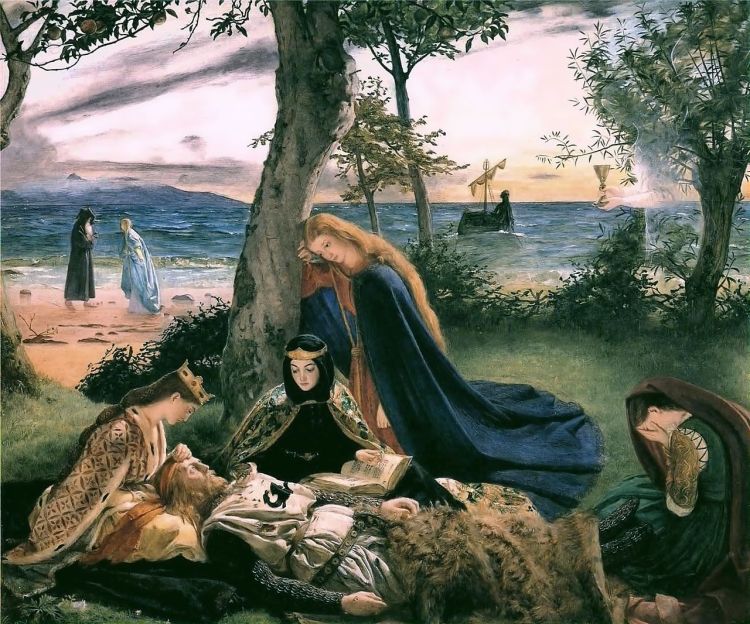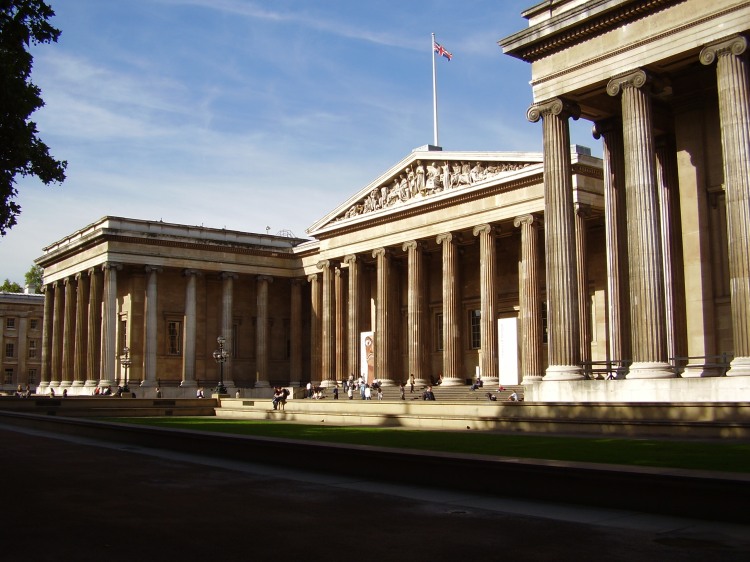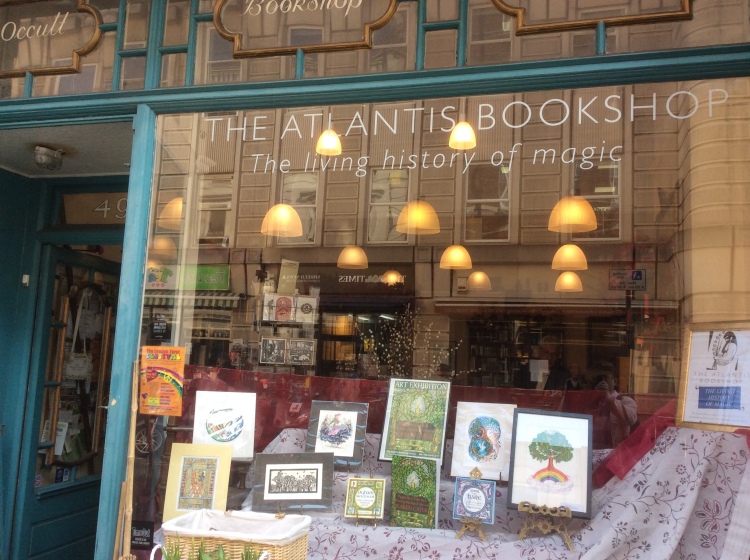Bloomsbury is one of my very favourite parts of London. I’m a little biased as I spent four years studying at SOAS, a college in the University of London during the 1990’s and in recent years have been spending quite a lot of time doing guided tours such as my Sherlock Walk or my Bloomsbury Literary Walk.
Lots of foreign visitors come to Bloomsbury albeit the busiest corner of the district without even knowing it when they hurry to and from The British Museum from the nearest tube station without ever thinking of exploring the wonderful streets and parks that abound here.
Most of the land in Bloomsbury was owned by the Duke of Bedford and as such, many of the streets and squares are named after his family or various points in and around his country estate.
The photo below is of the imaginatively entitled Bedford Square and is a relatively quiet oasis right in the middle of London. In some ways, Bloomsbury could be said to be the very first suburbs of London… now a good 25 miles away from the nearest modern suburbs.

As you can see, it is a somewhat picturesque district, the large park in the middle of the square remains accessible to the people who live on the square. So for a photo inside, someone needs to give me probably around £10 million for a fighting chance of grabbing even a bedroom.
Right from the beginning, Bloomsbury was artsy with the Pre-Raphealite Brotherhood becoming based here in the mid 19th Century. A collection of poets and artists who shook the artistic world with their romantic inspired works that deemed the work of artists who followed Raphael to be too mechanical. Their aspirations were summarised by their four founding principles:
- to have genuine ideas to express;
- to study Nature attentively, so as to know how to express them;
- to sympathise with what is direct and serious and heartfelt in previous art, to the exclusion of what is conventional and self-parading and learned by rote; and
- most indispensable of all, to produce thoroughly good pictures and statues.

It is very hard to walk around Bloomsbury without noticing and beautiful parks and garden squares. Historically, Bloomsbury was a hotbed of English literature, not just for those from Great Britain but for visiting writers from overseas such as Mark Twain.
In fact Bloomsbury was to literature as to what Montmartre was to painting in Paris and the streets are littered with plaques to writers, poets and playwrights. Thanks to the British Museum and London University, many scientific writers spent much time here too such as Charles Darwin who wrote his pivotal work, The Origin of The Species or Sir Arthur Conan Doyle who decided to supplement his authoritative medical writing with novels on some oddball deer-stalking hat wearing detective.

Above is Senate House, the very first skycraper in London which dates from 1932. It houses one of the finest libraries in the world and its art-deco styling often features in TV shows and even Hollywood movies. I guess it does look rather like an old fashioned tower you might have once seen in a North American city.
The very top of the building was used as a look-out and observatory during WW2 and its dominant nature inspired local resident George Orwell to feature it as the Ministry of Truth in his seminal work, 1984.

Now as then, Bloomsbury attracted some of the greatest minds in the world. The district still has a very literary and cultured atmosphere and is a very relaxed place for people to spend their spare time whether in one of the grand squares or one of the smaller intimate locations.
Each square and park has its own story and history and you never know quite what you find. Above in Tavistock Square is a statue commemorating the stay of Gandhi in London around the year 1890. His peaceful philosophy has resulted in the square becoming an unofficial peace park with memorials to the victims of Nuclear warfare in Japan and another to Conscientious Objectors throughout the world and throughout time.

No visit to Bloomsbury can quite be complete without looking up the Bloomsbury Group. They included writers, philosophers and even economists and had a pioneering vision with regards to feminism, pacifism, economics, sexuality and literature. They would meet up to exchange ideas and discuss their outlook on life and their works as well as being rather liberal with their own relationships.
A stroll around Bloomsbury makes it easy to imagine what it must have been like in the 1920s, relaxing in the garden squares whilst pushing forward the human condition beyond the norms for the world at that time.

Everywhere you go in Bloomsbury you see the blue or in some cases brown plaques denoting with people of historical significance lived and in most cases these for people in the arts and particularly literature.
In its day, Bloomsbury was also home to many of they figures of the Suffragette movement.

As is the case today, those in the arts today often concern themselves with social projects that would otherwise go unnoticed or unsupported. Not too far from beautiful Russell Square is Corams Field which was once the spot of the Foundling Hospital and which provided pioneering care for the most wretched children in London and often supported by the big names of the day.
The hospital may now have relocated to the country and the original become a building but the fields remain a sanctuary for children.
Practically across the world is the modern day equivalent in the shape of the world famous Great Ormond street hospital for children. Local resident J M Barrie gave over the royalties of his wonderful book Peter Pan in perpetuity to help fund pioneering health care for children everywhere and both he and the boy who refused to grow up are remembered prominently.

It would be easy to say that no visit to Bloomsbury would be completed without a trip to the British Museum. However, there are lots of museums and galleries in Bloomsbury along with many other cultural highlights and the British Museum just cannot be properly seen in a day.
It’s hard to imagine that for nearly a century, access to this universal museum was by appointment only but these days around 7 million visitors come to this free museum every year to see just some of the 233 million items (many at partner museums such as the Natural History Museum and the British Library).
I spent many hours in my four years at university grabbing the odd hour here and there in the British Museum and though I know the layout and roughly where everything is, I’d be lying if I could say I knew it all off by heart. Though I probably do know the Egyptian, Middle-Eastern and Iranian sections it is true.

The streets around the British Museum retain a unique feeling that drifts between the academic and the curious. Lots of dusty old book shops, antique shops, pubs and cafes including the one below which is no doubt influenced by Aleister Crowley, local resident and world-famous magician, writer and occultist.

You can see my new Youtube video on Bloomsbury below or you fancy a private literary tour around Bloomsbury then be sure to check out my tour page.


You go downstairs at the Fitzroy tavern?
LikeLiked by 1 person
No I haven’t done yet. That would be a great place to end my tours!
LikeLike
orwell used to write down there
LikeLiked by 1 person
Sure looks like a literary buff’s version of heaven!
LikeLiked by 1 person
It really is. I could quite happily live there but then I might not get much writing done!
LikeLiked by 1 person
Yeah 10 million pounds for a room? Wow.
LikeLiked by 1 person
Bloomsbury in late Summer/Early Autumn is London to me. I love the 1920s-1940’s and it’s a part of London that speaks to my heart. Senate House is beautiful- on the right day, it definitely has NYC vibes!
LikeLiked by 1 person
Yes I agree. I was just giving a literary tour there yesterday. Everyone who visits the district falls in love with it. I would love to live there for a while but was fortunate enough to study there for 4 years.
LikeLike